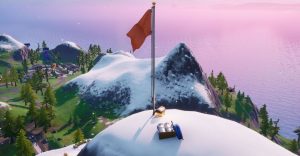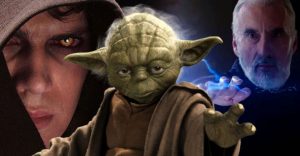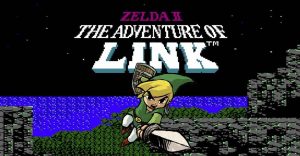The Worst Possible Pokémon Team In Every Generation

Pokémonfrequently tries to convince players of the potential within all its monsters, but experienced players will learn this is not the case, and there are some combinations of Pokémon that make for the worst teams possible in a given region. A Pokémon’s Base Stat Total (BST) is the deciding factor for their eligibility in battle. BST influences attack damage, health, defense, and speed of a Pokémon. Each region features powerful and unique creatures to battle, but players looking to claim victory should avoid the weaker monsters.
Nintendo created each Pokémon generation to reflect a real-world counterpart. For example, Pokémon Sword and Shield took place in Galar, which was based off of England. As a result, many region-specific Pokémon take after local flora and fauna. So while players won’t find dragons flying overhead or battle-raging mythical beasts, the inspiration for Pokémon designs can be found by those willing to look. A Pokémon’s real-life counterpart often influences its effectiveness in battle, with Bug-type Pokémon being less powerful than Dragon-type.
Nintendo developed eight unique regions of Pokémon: Kanto, Johto, Hoenn, Sinnoh, Unova, Kalos, Alola, and Galar. The next region is unknown, as Nintendo’s next Pokémon titles will be Pokémon Brilliant Diamond and Shining Pearl, fourth-generation remakes set in Sinnoh. Like the Pokémon titles before them, Brilliant Diamond and Shining Pearl will have hundreds of creatures to train. Players looking to avoid fully-evolved Pokémon that will not thrive in endgame battles should avoid the following party compositions.
Weakest Pokémon Party: Generation One, Kanto

- Farfetch’d
- Crobat
- Golem
- Raticate
- Wigglytuff
- Seaking
As the first generation of Pokémon, many fans enjoy the nostalgia Kanto offers with its 151 monsters. Despite its popularity, Kanto is home to many weaker Pokémon. Trainers should avoid keeping these creatures in their parties for too long if they want to claim victory.
Farfetch’d lacked an evolution in Pokémon’s first generation, but later gained a regional variant in Pokémon Sword and Shield. Farfetch’d also suffers many weaknesses as a Flying-type, paired with an unimpressive moveset that fails to improve as it levels up. Zubat’s abyssmal stats barely improve after evolving into Golbat, and attempting an evolution into Crobat is futile for most Trainers. Golem has six different weaknesses and low speed, making it a punching bag for enemies. Raticate and Wigglytuff are weak to several prominent Pokémon types in Kanto and fail to develop movesets to compensate for it. Goldeen is one of the most useless Pokémon in the franchise and fails to improve after its evolution into Seaking, who is overshadowed by superior Water-types like Gyarados and Kingdra.
Weakest Pokémon Party: Generation Two, Johto

- Wobbuffet
- Delibird
- Smeargle
- Sunflora
- Sudowoodo
- Ledian
Johto is the neighboring region to Kanto and features some familiar designs and Pokémon. Unfortunately, like Kanto, Johto has its fair share of useless Pokémon that should be left roaming the wilds instead of the battlefield. Pokémon’s Wobbuffet’s stats are all low except for its HP, which subverts the use of its Destiny Bond move. Delibird is a Pokémon that can actively heal opponents, which is a risk Trainers should never take. Smeargle can be helpful with its Sketch ability, but its stats are liable to get it knocked out before it can kick in. Sunflora and Sudowoodo are single-type Pokémon that fail to develop movesets to counter their weaknesses and suffer from low BSTs, and while Ledian is dual-type, it doesn’t fare much better.
Weakest Pokémon Party: Generation Three, Hoenn

- Luvdisc
- Unown
- Plusle/Minun
- Dustox
- Linoone
- Exploud
Hoenn is the setting of Pokémon Sapphire, Ruby, and Emerald and features some world-shaking catastrophes throughout the game’s story. The region was separated from Johto and Kanto, allowing Nintendo to veer from the regions’ norms and explore new themes. Unfortunately, these themes resulted in some ineffective Pokémon during battle.
Luvdisc was once a highly desired target for Trainers, as it would often be holding Heart Scales (necessary to activate the Move Reminder). This item was the Water-type Pokémon’s only use, as it lacked an evolution and was overshadowed by Milotic, Hoenn’s Gyarados-equivalent. Unown appeared in Hoenn’s ruins and wilds, mirroring an ancient alphabet. Its low stats, inability to learn valuable moves, and Psychic-type weaknesses left it vulnerable to Hoenn’s many Dark-types. Plusle and Minun were the first Pikachu clones but lacked its power levels and evolution potential. Dustox’s uses in Hoenn are extremely limited, as the Bug-Poison type Pokémon only learns Quiver Dance which fails to perform well at higher levels. Linoone and Exploud’s low BSTs prevent each monster from reaching its fullest potential in battle.
Weakest Pokémon Party: Generation Four, Sinnoh

- Kricketune
- Abomasnow
- Bibarel
- Pachirisu
- Chatot
- Purugly
Sinnoh is one of Pokémon’s most popular generations, featuring exciting and unique monsters across the region. Unfortunately, while the creatures dwelling throughout the land looked interesting, some failed to make themselves useful on teams. Kricketune has the lowest stat total of all evolved Pokémon and suffers several Bug-type weaknesses. Abomasnow has a fantastic design, but its Ice-Grass dual-type makes it weak to seven different types. Bidoof is memed in the Pokémon community due to its utter uselessness in battle, and Bibarel is no different. Pachirisu is another Pikachu clone that lacks the power levels of its inspiration. Chatot is a Flying-type with no evolution whose Sing attack can be learned by many other creatures. Purugly suffers similarly and fails to occupy a unique role in players’ parties.
Weakest Pokémon Party: Generation Five, Unova

- Stunfisk
- Amoonguss
- Liepard
- Watchog
- Emolga
- Audino
Unova is an underrated Pokémon generation but still features monsters that underdeliver on viable movesets and power levels in battle. Stunfisk has a strange mix of weaknesses and attacks, with its Ground-Electric dual typing failing to give it many advantages in battle. Amoonguss is a Grass-Poison dual-type Pokémon that suffers from many shortcomings with its low Defense, ensuring this Pokémon’s swift defeat against competent opponents. Liepard has an exciting design and powerful attacks, but its low Base Stat Total fails to unleash effective damage. Emolga is another Pikachu clone and is only effective with Volt Switch (which removes the Pokémon from the battle). Finally, Watchog and Audino fail to develop effective movesets and suffer from numerous weaknesses to other types.
Weakest Pokémon Party: Generation Six, Kalos

- Gourgeist
- Vivillon
- Diggersby
- Furfrou
- Aromatisse
- Pyroar
Several of the Kalos region’s Pokémon failed to make a strong impression. Gourgeist is modeled after a pumpkin and has a unique design, but its low stats and lack of effectiveness against prominent Normal-types cripple this Ghost’s powers. Vivillon is beautiful, but it struggles with accuracy, needing the Compound Eyes ability to be effective in battle. Diggersby is a Ground-type with some use, but has trouble in comparison with other Ground-types like Rhyperior and Mamoswine. Furfrou is a Pokémon with low survivability, suffering from low defense and hit points. Aromatisse’s only strength comes from its Healer ability, and Pyroar’s powerful attacks are sabotaged by its low base stat total.
Weakest Pokémon Party: Generation Seven, Alola

- Pyukumuku
- Wishiwashi
- Alolan Dugtrio
- Alolan Marowak
- Gumshoos
- Alolan Raticate
Modeled after Hawaii, the Alola region introduced Pokémon players to a new structure of Gym Battles called Trials. The tropical climate resulted in regional variants of Pokémon, as they adapted to thrive in the environment. Unfortunately, while the designs of these Pokémon were pleasing, several monsters weren’t worth the Pokéballs Trainers caught them in.
Pyukumuku’s moveset learns no attacks besides Counter and Bide, leaving Trainers dependent on available TMs to make this Pokémon viable. Wishiwashi is a weak Water-type Pokémon with no evolution and a measly 175 BST. Though it obtains the Schooling Ability at level 20, it fails to make this Pokémon substantially more useful. Alolan Dugtrio, Alolan Marowak, and Alolan Raticate are also fairly ineffective compared to other Rock, Fire, and Dark-type Pokémon encountered in the region. Gumshoos is encountered early on in the Alola region, and similar to other region’s ‘Route One’ encounters, fails to develop an effective moveset no matter its level.
Weakest Pokémon Party: Generation Eight, Galar

- Frosmoth
- Mr. Rime
- Morpeko
- Alcremie
- Dubwool
- Perrserker
Galar is the latest Pokémon region developed and the setting of Pokémon Sword and Shield. Home to a wide variety of Pokémon and the origin of the Dynamax and Gigantamax mechanics, Pokémon’s eighth-generation still suffers from weak Pokémon. Frosmoth evolves from Snom once its friendship is high enough but only has Struggle Bug and Powder Snow in its unique moveset. Mr. Rime’s only use is for nightmare fuel, and Morpeko is yet another Pikachu clone that fails to deliver on the latter’s power levels. Alcremie has a unique evolution method but suffers from sub-par stats. Players can remedy this if they obtain a Gigantamax Alcremie. Dubwool, though adorable, fails to become more valuable than other options in Galar. Perrserker’s unique typing increases its weakness without increasing its battle potential, making this variant an undesirable party Pokémon.
About The Author


















